Both parties go all in on Nevada's bellwether Senate race
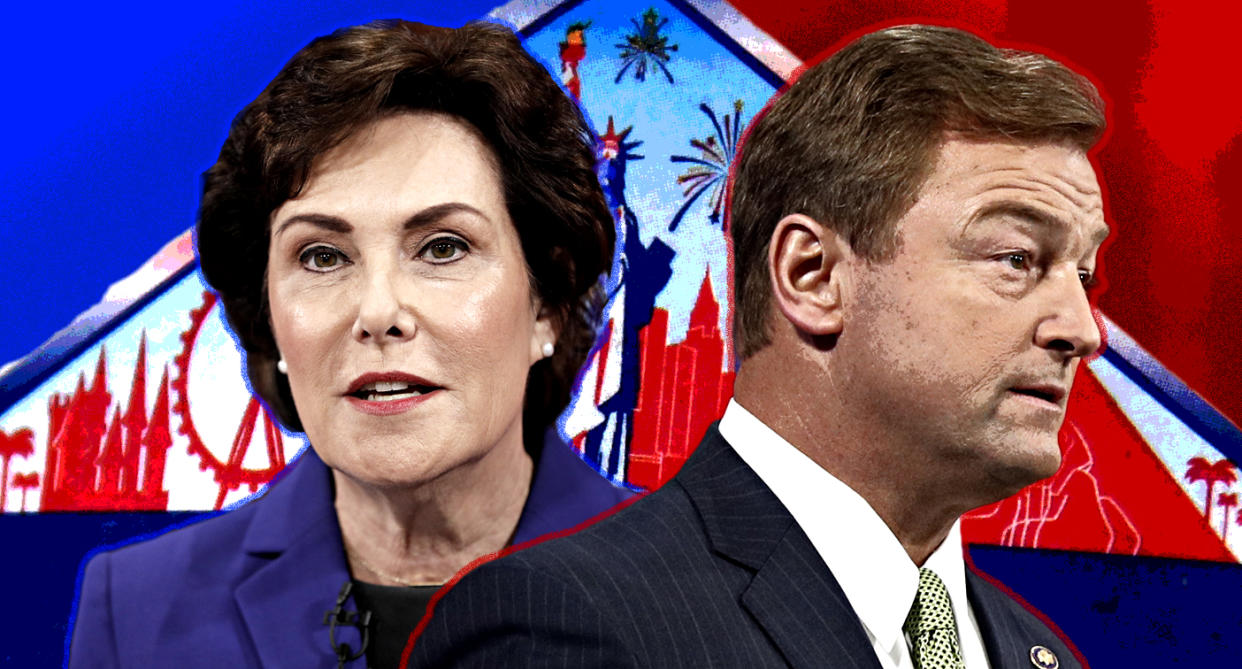
“As Maine goes, so goes the nation” — that was the original version of the phrase, coined in the late 1800s to reflect the fact that the party that won the state’s gubernatorial election in September typically went on to win the presidency.
Later, Ohio became the premier bellwether in American politics after mirroring the national presidential vote in nearly every election of the 20th and early 21st centuries.
But anyone hoping to understand what’s about to happen on Nov. 6 might want to adopt a new slogan: “As Nevada goes, so go the midterms” — in particular, the hard-fought Senate contest between Democratic Rep. Jacky Rosen and incumbent Republican Sen. Dean Heller.
The Heller-Rosen matchup was always destined to be one of 2018’s marquee fights. A former stockbroker from Carson City, Heller climbed the ranks of the Nevada GOP throughout the 1990s, eventually winning a seat in the U.S. House in 2006 and ascending to the U.S. Senate in 2011, when he was appointed to replace retiring Sen. John Ensign.
But the following year, Heller barely edged out his Democratic opponent, and four years later Hillary Clinton won Nevada. Suddenly Heller — the sole Republican senator from a pro-Clinton state, up for reelection in 2018 — had become America’s most vulnerable GOP incumbent. To campaign against him, Nevada Democrats quickly recruited Rosen, a computer developer, former synagogue president and newly minted congresswoman from Henderson.
Since then, the vast majority of coverage has focused on the major challenge facing Heller: How do you solve a problem like Donald Trump? The senator’s relationship with the leader of his own party has been complicated, to say the least. In 2016, Heller, then a self-styled moderate with purple-state positions on immigration and health care, declared that he “vehemently oppose[d] our nominee” because he “denigrates human beings.”
“[I’m] 99 percent against Trump,” Heller said.
But after Trump won — and his popularity with Republicans in and out of Nevada showed no signs of flagging — the senator began to change his tune, vacillating on Obamacare repeal, immigration and eventually Trump himself. In July, Heller backtracked on his pledge to oppose a GOP effort to repeal and replace the 2010 health care law; by the end of the summer, he was calling the president a “great leader.”
“Everything you touch turns to gold,” Heller gushed alongside Trump at a recent rally.
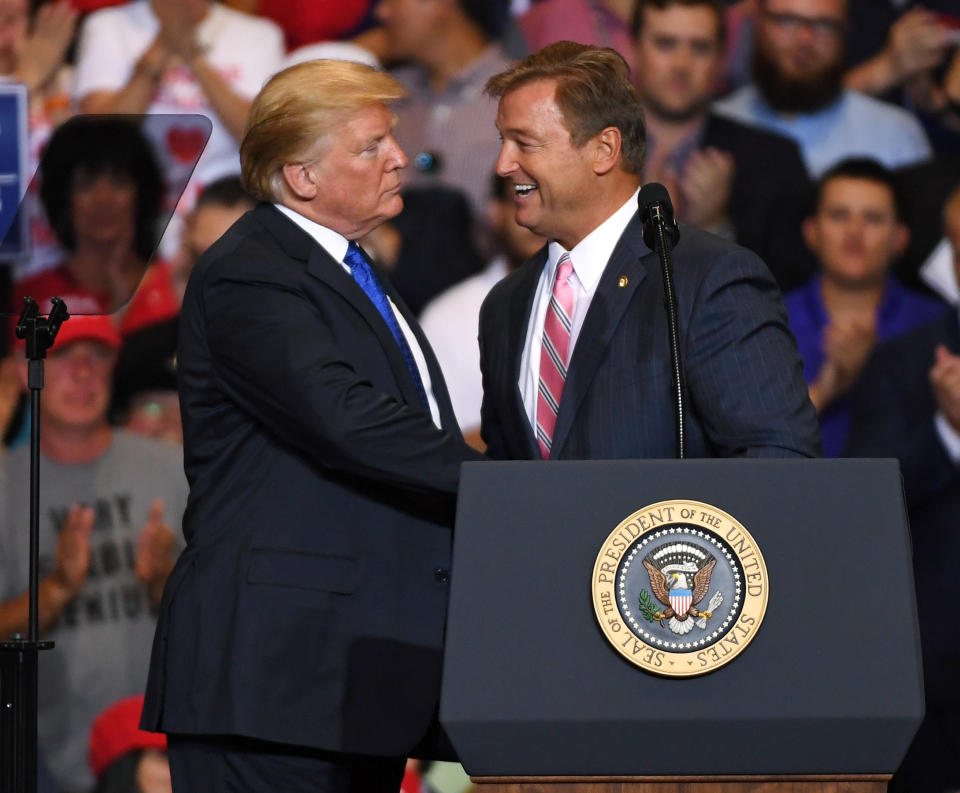
Rosen and her Democratic allies have, in turn, made Heller’s transformation the crux of her campaign, nicknaming him “Senator Spineless” and depicting him as one of those wriggling wind-sock figures that flap around outside car dealerships — all while claiming that only Rosen would help check Trump’s GOP.
For a while the onslaught seemed to be working. At the start of 2017, Heller boasted a positive job-approval rating; over the following year and a half, however, his approval number fell by 6 percentage points while his disapproval grew by a dozen -— a net-negative shift of nearly 20 points, one of the biggest in the Senate. All but two of the head-to-head polls taken between March and early September showed Heller trailing Rosen, and even the pair that put Heller in the lead only awarded him a one-point advantage. Things got so bad that in March, Trump had to intervene and force Heller’s archconservative primary opponent, Danny Tarkanian, to quit the race and run for Rosen’s old House seat instead.
Yet as summer turned to fall, the tide seemed to turn. Nine surveys have been released since mid-September; only three have found Rosen in first place. On average, Heller is now ahead by about 2 percentage points, and the data journalists at FiveThirtyEight give him a roughly 60 percent chance of winning reelection.
In other words, Nevada is still too close to call — but if anyone has even the slightest edge, it’s probably Heller.
Which brings us to the reason why the Silver State Senate battle could be 2018’s top bellwether. At this point, the messaging war in Nevada has been fought to a draw. Democrats are certain, as Rosen has repeated ad nauseam, that a vote for Heller means a “blank check” for Trump, and Republicans seem to accept that Heller is no longer the anti-Trump apostate he once appeared to be.
Instead, victory will now come down to which voters actually show up to vote. And it turns out that Nevada is particularly interesting in this regard.
Usually when you think of a bellwether state, you imagine a demographic mix that reflects the broader American electorate. But Nevada doesn’t have that. What it does have is disproportionate numbers in the two voting blocs that could, more than any others, determine which party controls Congress next year.
On the Republican side, that means the so-called Trump base: mostly rural whites without a college education. In 2016, non-college-educated whites made up a third of Nevada’s electorate, and they preferred Trump by 24 percentage points. Nearly every one of this year’s competitive Senate races is taking place in a red, rural state.
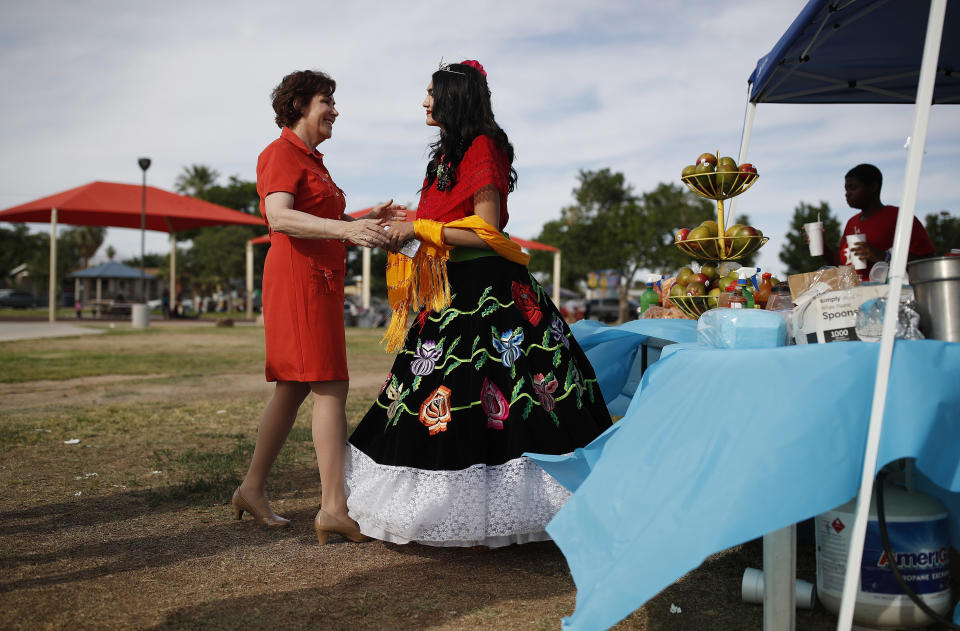
On the Democratic side, it means Latinos. Two years ago, self-identified Latinos made up nearly 20 percent of the Nevada electorate, and they preferred Clinton by as much as 78 percentage points, if analyses based on precinct-level results (as opposed to exit polls) are to be believed. Of the 23 Republican-held House districts that Clinton carried in 2016, 11 have populations that are at least 20 percent Latino — enough to make the difference between Democratic or Republican control.
Many of the contours of the 2018 midterms have been clear for months. Democrats have long been enthusiastic about rebuking Trump’s GOP at the polls; white, college-educated women have broken sharply with the president and seem energized to turn out. What’s been less clear is the mood of the GOP base: Will they be discouraged (as they were in the 2006 midterms under former President George W. Bush) or excited (as they were in 2010 and 2014 under former President Barack Obama)? The same goes for Latinos, who tend not to show up in off-year elections and who have sounded less engaged and less anti-Trump in recent surveys than Democrats had hoped.
These are two of the biggest remaining questions of the cycle — and Nevada is uniquely positioned to answer both.
For one thing, each party is bringing its A game to the Silver State. The Democrats’ vaunted Reid machine — named after its architect, former Senate Majority Leader Harry Reid — is “still humming,” as Helen Kalla, communications director for the state party, recently told Yahoo News, with its unmatched record of partnering with the powerful Culinary Workers Union to turn out Latino voters in Clark County (Las Vegas). Meanwhile, some of the biggest names in Democratic politics — Obama, former Vice President Joe Biden, independent Vermont Sen. Bernie Sanders — have visited Nevada in recent days to rally the base.
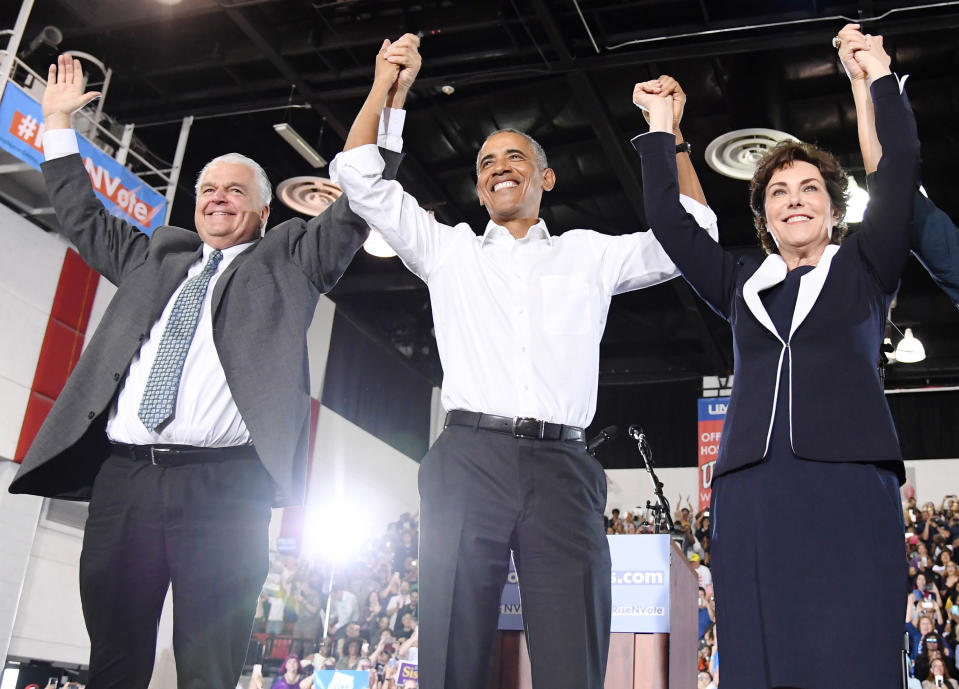
Not to be outdone, the national GOP has invested more heavily in its Nevada ground game than ever before, employing dozens of paid staffers across the state; together they’ve trained thousands of volunteers, fellows, neighborhood team leaders and core team members, with a particular focus on rural, absentee balloting. And Trump himself visited Elko on Saturday, with Vice President Mike Pence to follow in Carson City this coming weekend.
There are signs that Republican efforts may be paying off. As the national intensity gap between Democrats and Republican narrows and conservatives reengage in the wake of the polarizing Brett Kavanaugh hearings — likely a factor in Heller’s improving poll numbers — the first few days of Nevada early voting suggest that Democratic dreams of a dispirited Trump base sitting 2018 out are unlikely to come true.
“Rural turnout [is] up [over previous midterms] and the GOP [is] destroying the Democrats there in early voting and absentees,” writes Jon Ralston, Nevada’s top political journalist and one of the few commentators who can put early-vote numbers (which are often misleading) in the proper perspective. “The rurals are keeping the GOP in the game, and [their] absentee ballot campaign is looking very smart right now.”
Ralston goes on to point out that if these trends continue, Heller could have a path to victory: “The Dems winning Clark and Washoe [counties]” — the latter is home to Reno — “and losing the rurals by a huge margin” is “exactly how [Nevada Attorney General] Adam Laxalt got elected four years ago [as] the only statewide candidate in modern history to lose urban Nevada and still win.”
At the same time, Democrats also seem to be performing well in the bluer and purpler parts of the state, with “double-digit” leads in Clark County and “five straight days” of victories in Washoe, the state’s key swing county. Polarization is the pattern, with passions running high on both sides. Meanwhile, a new poll taken for Rosen’s campaign by Latino Decisions, which offers bilingual interviewing and is known for its ability to accurately sample and poll Latinos, shows Rosen leading by nearly 50 percent among likely Latino voters — a margin that could ensure a Democratic victory if it actually materializes on Election Day.
With 11 days to go, these are two of the last big “ifs” of 2018 — in Nevada and across the nation. Which way the former goes will tell us a lot about where the latter is heading.
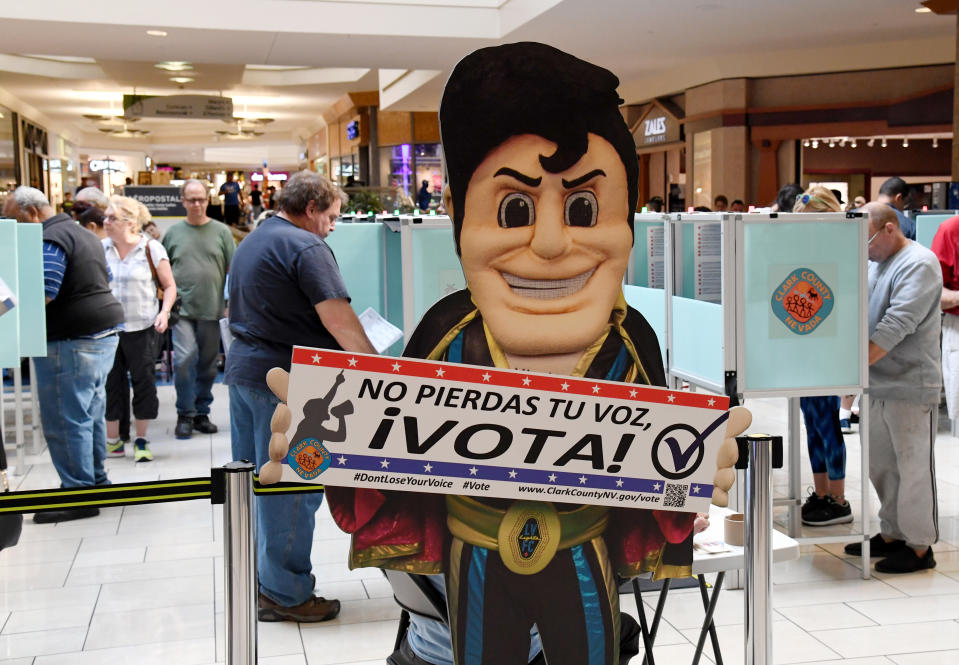
_____
Read more Yahoo News midterms coverage:
Red-tide awakening: How Florida’s environmental woes could hurt GOP’s Scott in Senate race
‘Outside agitators’ phrase resurfaces in Georgia governor’s race
Menendez race pits ethical concerns against party loyalty, and loyalty is winning
Portrait of a moderate district: NJ-11 leans R, but the race leans D
In Senate race, GOP Rep. Blackburn accuses her opponent of being a Democrat
Photos: Suspicious packages sent to top Democrats, CNN and others



